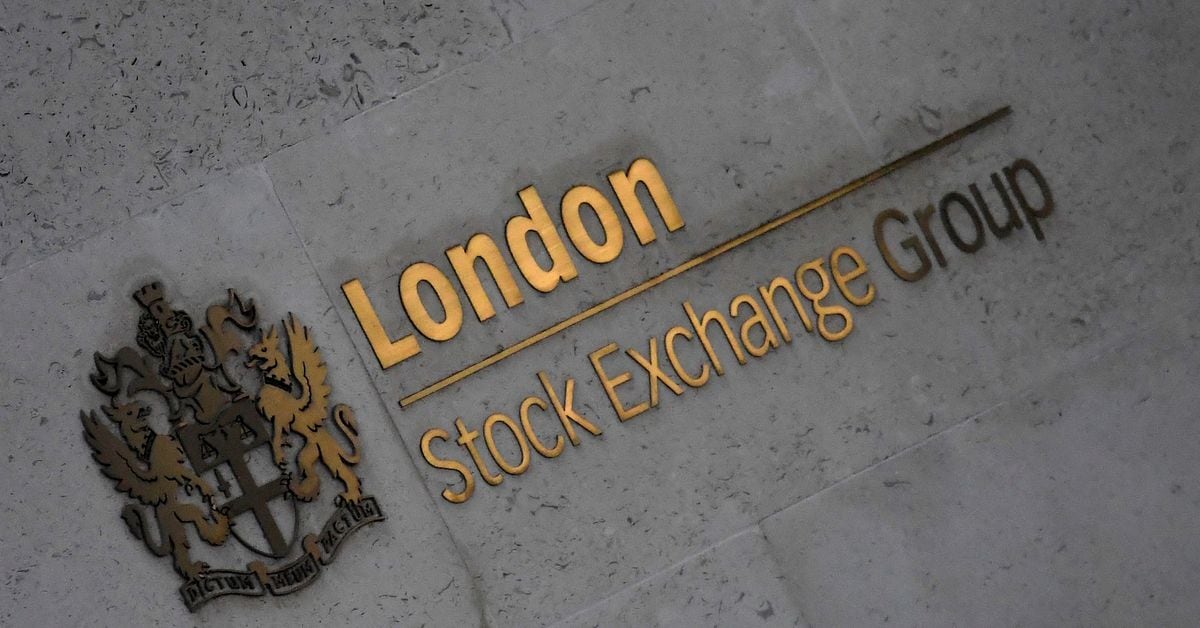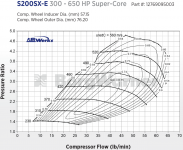HP/L ratio is very, very good. It looks like there will be a revision in the specs of TB3 and Anka. In Anka, a payload capacity of around 400/500kg can be achieved with a flight endurance of around +24h. Similarly, the TB-3 payload can be revised well above 400 kg.
You are using an out of date browser. It may not display this or other websites correctly.
You should upgrade or use an alternative browser.
You should upgrade or use an alternative browser.
TR Propulsion Systems
- Thread starter Combat-Master
- Start date
YeşilVatan
Contributor
When it comes to tanks and heavy vehicles, the problem is not the engine but the transmission AFAIK.Now I wonder what a tank engine made by TEI could be like
View attachment 53228
View attachment 53229
Single crystal wing types and generational differences
@TheInsider @Yasar
What's our level 3 I guess?
Brokengineer
Committed member
Consider a pd300 making 200hp @30kft where,
2.1lt is 128 cubic inch
@30kf ft o2 density is 1/3 of sea level which means turbo has to push around 60lb/min air
Bsfc is around 0,55
Assume VE around %100 at sea level around 3000 and 4000 rpm
Then
Without a turbo engine power would be,
0,55x128x1(VE)x4000rpm /1728
:162,96cfm /14,472 = 11,26 lb/min at atmosperic pressure mean 113hp
Now pressure ratio has to be around 5.3 which is around 4.3 bars. I just realised that for 2.1l engine there is not any turbo that can provide that power in displacement.
Consider given turbocharger below, it is only capable of pushing 3.6 bar(believe me a turbo with exceeding that level will affet spool performance quite adversely), then
11,26lb/min x 4,6 (pr) = 51.8 lb/min which means 1/3 of it at 30kft means 172hp is around maximum possible given bsfc is 0,55 and VE is %100.
2.1lt is 128 cubic inch
@30kf ft o2 density is 1/3 of sea level which means turbo has to push around 60lb/min air
Bsfc is around 0,55
Assume VE around %100 at sea level around 3000 and 4000 rpm
Then
Without a turbo engine power would be,
0,55x128x1(VE)x4000rpm /1728
:162,96cfm /14,472 = 11,26 lb/min at atmosperic pressure mean 113hp
Now pressure ratio has to be around 5.3 which is around 4.3 bars. I just realised that for 2.1l engine there is not any turbo that can provide that power in displacement.
Consider given turbocharger below, it is only capable of pushing 3.6 bar(believe me a turbo with exceeding that level will affet spool performance quite adversely), then
11,26lb/min x 4,6 (pr) = 51.8 lb/min which means 1/3 of it at 30kft means 172hp is around maximum possible given bsfc is 0,55 and VE is %100.
Attachments
Good informative paper.View attachment 53228
View attachment 53229
Single crystal wing types and generational differences
@TheInsider @Yasar
Since its first introduction in to gas turbine engines in 1982 by Pratt & Whitney, single crystal blades have been going through many transformations. By adding rare metals like Rhenium or rhodium in small amounts, the heat resistance properties of blades have been altered dramatically. After the third generation of blades, the improvements attained with respect to temperature advantages vs longevity of blades started to be incremental.
97000lbf RR TrentXWB97 engine of Airbus A350 uses third generation blades that can last over 25000hours before an overhaul.
As TEI has reached the point of being able to produce third generation crystal blades, that is good enough to produce engines that will power TFX. F22’s engine probably doesn’t use anything newer than second or third generation blades.
Single Crystal doesn’t immediately impart a magical superiority to the blades’ performance. Ceramic coatings and cooling channel geometries in the blades make a big difference to the performance.
As single crystal technology is coming to a precipice, new avenues have been investigated. As a result the “Hybrid Ceramic Matrix Composite” blades will be the next technology bandwagon everyone will be getting on to.
Of course the adaptive cycle technologies (GE-XA100) and engines that switches from turbofan to turbojet to ramjet to scramjet operations are yet to come. (Lockheed Martin SR-72 ??)
And yet i read from multiple sources that F119 uses fourth gen blades.F22’s engine probably doesn’t use anything newer than second or third generation blades.
Later engines may well have 4th generation blades. But as you can see from below paper that 4th generation blades were still being developed by December 2004.And yet i read from multiple sources that F119 uses fourth gen blades.
F119 engine was being developed in early 1980’s. F22’s and f119’s maiden flight was in 1997. P&W was given the contract to produce the engines in 1991and in 1993 first ground tests were conducted.
With a turbine inlet air temperature of 1649 degrees Celsius for f119 engine, the need for high performance blades would not be too critical to warrant newer generation blades.
However the f119 engine is complemented with a 4th generation FADEC system.
I think it would be an engine that would travel very fast on the top of the mountains, on the flat plain at take-off speed. Ultimately, it will be an aerospace company-produced tank engine.Now I wonder what a tank engine made by TEI could be like
Now I wonder what a tank engine made by TEI could be like
Not only it would “violate” the ears of crews, but also a very well known fact that it‘s (the turbine engine) extremely expensive to maintain and close to impossible to repair on the field.It would be an assault on the crew's ears.
From a gas turbine engine point of view you are correct. It would also mean that we would need maintenance crews that understand turbine engine technology.It would be an assault on the crew's ears.
Actually, Prof Aksit was asked the question about which company is best suited to produce a tank engine for Altay when in early 2015 Tumosan was given the job.
His answer at the time was, TEI and Tulomsas. In fact a consortium of both, would have had an engine running quite a few years ago. Possibly before 2020.
Angry Turk !!!
Contributor
Mete Yarar at Kale Group.
Combat-Master
Baklava Consumer
Excellent, must watch !
Mete Yarar at Kale Group.

Rolls-Royce’s new chief warns company is a ‘burning platform’
Tufan Erginbilgic delivers bleak assessment to employees on future of UK engineering group

FTSE 100 flat ahead of cenbank decisions; Rolls Royce drags
Britain's FTSE 100 was flat on Friday with investors cautious ahead of major central bank decisions next week, while shares of Rolls-Royce slumped on a warning from the engineering company's top boss.
Sign the contract or go doom.
As far as I remember, No it doesnt have thrust vectoringDoes the engine family TEI is working on having the capability to do thrust vectoring?
Although more qualified members may answer as they are more up to date with the info
No it doesn't. It only has thrust throttling like the F16. The exhaust nozzle expand and shrinks but does not redirect.Does the engine family TEI is working on having the capability to do thrust vectoring?
No it doesn't. It only has thrust throttling like the F16. The exhaust nozzle expand and shrinks but does not redirect.
Well, that is a disappointment since thrust vectoring would of open the door for an aircraft like the X-44 MANTA to be operational in the future, are there any plans to build an engine with thrust vectoring in the future?
Thrust vectoring is not worth the effort in modern planes. If deemed useful it can be added as a nozzle extension in the future. However I don't think TAI will do it as it is not critical when you have stand off munitions.
Although thrust vectoring gives a definite advantage in agility and quick manoeuvrability, the advantage obtained has not been a game changer or a must case. In fact information to the contrary has been more prevalent.
Just to give you a quick example; The EJ200 engine has had a TVC version which also gives an increase in thrust (both dry and withA/B). Eurofighter users have not opted for this version. Because the advantage wasn’t worth the effort.
Where it would be used most is the dog fights and escaping a2a missiles.
But from pilots‘ anecdotes and technical papers it is certain that when TVC is applied the plane loses so much energy and momentum that to recover it becomes a problem in WVR missions. This has come to light when F22s were played against German Typhoons in Alaska.
With more BVR oriented planes, TVC is not seen a necessity at all.
Just to give you a quick example; The EJ200 engine has had a TVC version which also gives an increase in thrust (both dry and withA/B). Eurofighter users have not opted for this version. Because the advantage wasn’t worth the effort.
Where it would be used most is the dog fights and escaping a2a missiles.
But from pilots‘ anecdotes and technical papers it is certain that when TVC is applied the plane loses so much energy and momentum that to recover it becomes a problem in WVR missions. This has come to light when F22s were played against German Typhoons in Alaska.
With more BVR oriented planes, TVC is not seen a necessity at all.











